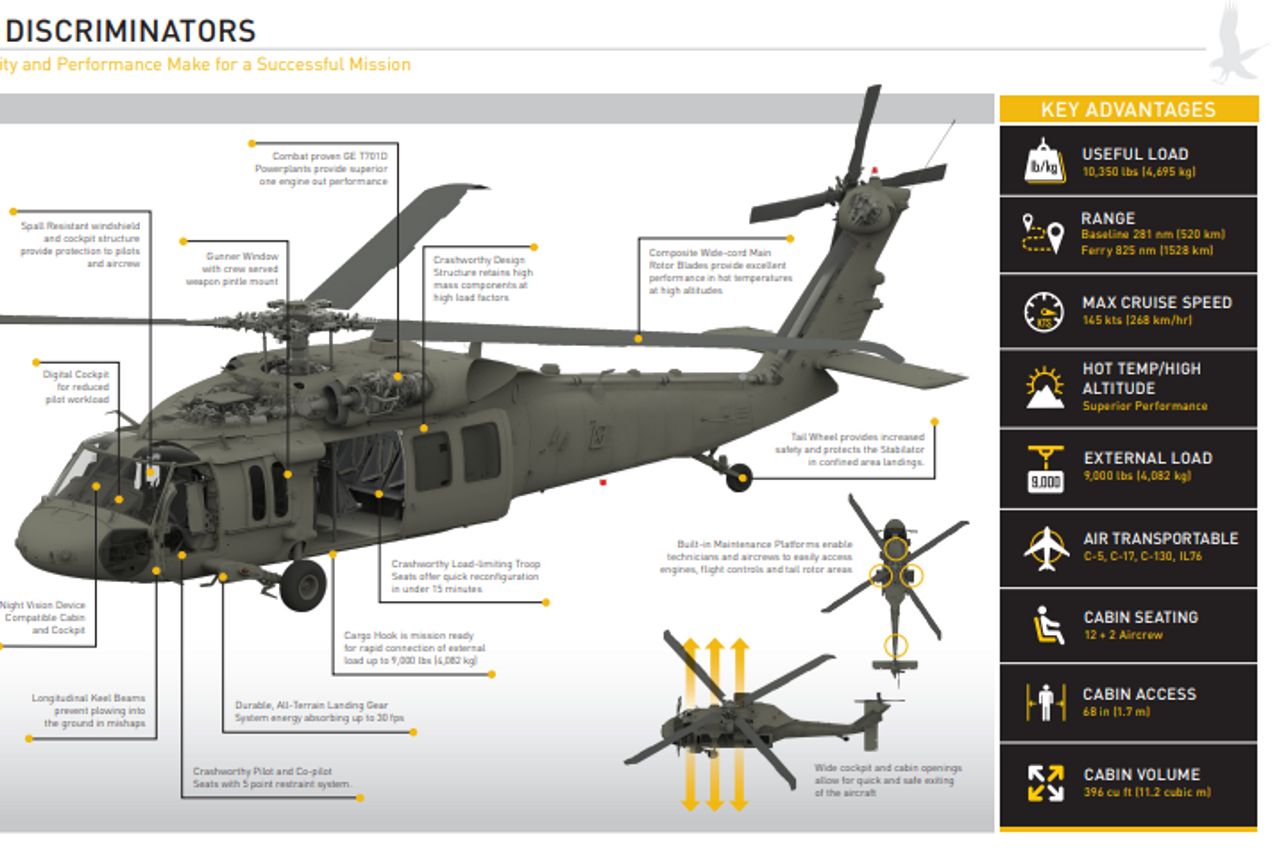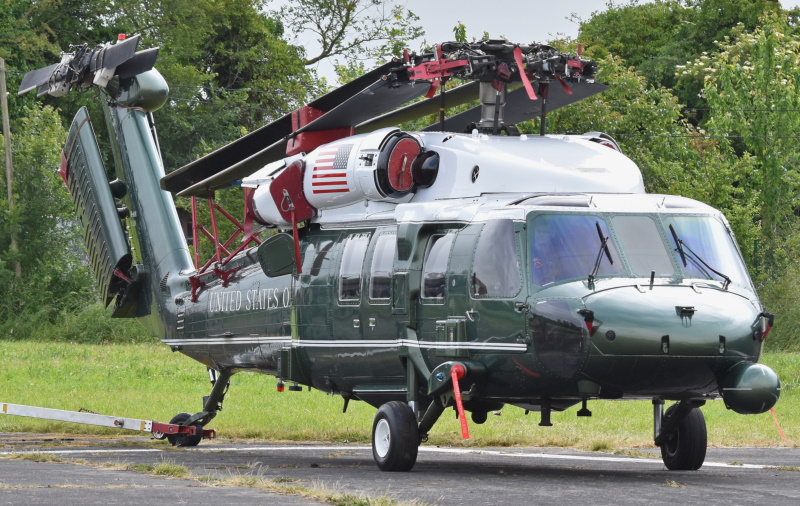How the Sikorsky S 70 Sticks Out in the Helicopter Sector
How the Sikorsky S 70 Sticks Out in the Helicopter Sector
Blog Article
High-Performance Multi-Role Rotorcraft Featuring Advanced Cabin Technologies and Integrated Sensing Unit Systems
The world of rotorcraft modern technology has seen remarkable improvements in recent times, particularly in the world of high-performance multi-role rotorcraft geared up with sophisticated cockpit modern technologies and effortlessly integrated sensor systems. These innovations have not only boosted the functional capabilities of rotorcraft but have actually also dramatically influenced contemporary aeronautics procedures on different fronts. From enhanced mission adaptability to enhanced operational performance, the convergence of sophisticated cabin technologies and incorporated sensor systems has actually introduced a brand-new age of opportunities for rotorcraft applications. In the following conversation, we will certainly explore the evolution of rotorcraft technology, dive into the realm of advanced cabin technologies, and take a look at the effects of incorporated sensor systems on the operational versatility and efficiency of contemporary rotorcraft.
Advancement of Rotorcraft Innovation
The evolution of rotorcraft innovation has been noted by considerable developments in the rules of aerodynamics, materials, and propulsion systems, forming the capacities and efficiency of modern rotorcraft. Aerodynamic enhancements have enhanced the effectiveness and maneuverability of rotorcraft, enabling raised rate, agility, and stability throughout trip (sikorsky s 70). Advancements in materials, such as making use of composite materials and advanced alloys, have caused lighter yet stronger rotorcraft structures, boosting general performance and longevity. Additionally, innovations in propulsion systems, including extra powerful engines and cutting-edge propulsion technologies, have actually allowed rotorcraft to accomplish higher altitudes, faster rates, and higher hauls.
These improvements have not just transformed the abilities of rotorcraft however have actually likewise broadened their applications throughout different markets, including armed forces, commercial, and emergency situation solutions. The continuous development of rotorcraft technology continues to drive advancement in the area, pressing the borders of what is feasible and shaping the future of vertical flight.
Advanced Cabin Innovations
Building upon the fundamental improvements in aerodynamics, products, and propulsion systems, the world of rotorcraft modern technology currently moves emphasis towards introducing Advanced Cabin Innovations. The combination of cutting-edge innovations within the cabin atmosphere plays a critical role in enhancing the functional capacities, safety and security, and efficiency of contemporary rotorcraft. sikorsky s 70. Advanced Cockpit Innovations incorporate a wide array of attributes created to provide pilots with improved situational recognition, streamlined data monitoring, and user-friendly control interfaces
Among the essential advancements in cabin design is the execution of glass cockpits, which replace standard analog gauges with high-resolution screens. These digital systems supply adjustable formats, real-time information combination, and improved readability, allowing pilots to accessibility critical details at a glimpse. Advanced avionics systems, such as fly-by-wire controls and augmented reality screens, are transforming how pilots communicate with the airplane, permitting for precise control and improved decision-making abilities.


Including advanced cockpit advancements not just improves pilot efficiency yet also adds to general goal performance and safety and security in intricate operational settings. By leveraging advanced modern technologies within the cabin, rotorcraft manufacturers are establishing brand-new requirements for functional quality and objective success.
Integrated Sensor Solutions
With the evolution of rotorcraft technology, the assimilation of sophisticated Integrated Sensor Solution has ended up being vital in enhancing functional performance and security. These Integrated Sensing unit Equipments encompass a vast variety of innovations that offer important data for various features such as navigation, surveillance, targeting, and ecological tracking. By perfectly integrating sensing units like radars, cameras, lidar, and infrared systems into rotorcraft, drivers can take advantage of enhanced situational awareness, improved objective capacities, and lowered pilot work.
One secret benefit of Integrated Sensing unit Solutions is their ability to collect real-time data and supply actionable understandings to pilots and mission operators. For example, progressed radar systems can spot and track targets over fars away, permitting very early risk discovery and reliable action planning. Additionally, incorporating infrared and electro-optical electronic cameras makes it possible for rotorcraft to perform reconnaissance and security goals with precision and accuracy.
Basically, the integration of sophisticated sensing unit technologies right into rotorcraft not just boosts operational performance but likewise contributes significantly to total objective success and crew safety. As rotorcraft remain to advance, the role of Integrated Sensing unit Solution will undoubtedly stay at the leading edge of advancement in the aerospace industry.
Functional Adaptability and Efficiency
Enhancing operational versatility and performance in rotorcraft is a natural progression from the combination of innovative Integrated Sensor Solutions. By leveraging the insights and information supplied by these innovative sensor systems, rotorcraft can optimize their efficiency throughout various goals and environments.
Operational versatility includes the ability of rotorcraft to adapt to different roles and circumstances effectively. With innovative cockpit innovations and integrated sensor systems, rotorcraft can perfectly pop over to these guys transition between tasks such as search and rescue, clinical evacuation, monitoring, and extra. This convenience improves the rotorcraft's capability to fulfill varied functional needs without calling browse around here for comprehensive reconfiguration.
Performance in rotorcraft procedures is critical for maximizing goal efficiency and resource usage. Integrated sensor systems play a crucial role in improving functional effectiveness by supplying real-time information on climate condition, terrain mapping, target monitoring, and much more. This data enables pilots to make informed choices swiftly, optimize trip courses, preserve fuel, and boost overall objective efficiency.
Effect On Modern Aeronautics Operations

In addition, the combination of advanced sensors assists in improved objective preparation and implementation, allowing rotorcraft to perform a wide variety of tasks with improved precision. From search and rescue procedures to aerial firefighting and police missions, the capacities of contemporary rotorcraft outfitted with advanced cabin innovations and incorporated sensor systems are unmatched.
Additionally, the influence of these improvements expands beyond operational effectiveness to cost-effectiveness and sustainability. By optimizing trip courses, gas intake, and maintenance routines, high-performance rotorcraft outfitted with advanced cabin innovations and sensing units add to lowering functional costs and environmental effect, making them indispensable properties in contemporary aeronautics procedures.
Verdict
In conclusion, the high-performance multi-role rotorcraft with sophisticated cabin technologies and integrated sensor systems stands for a significant development in air travel modern technology. These technologies enhance functional adaptability and performance, inevitably influencing modern-day aeronautics procedures in a favorable means. The article source assimilation of these advanced technologies permits improved capabilities and performance in different objective situations, showcasing the continued improvement of rotorcraft technology in the aeronautics sector.
The world of rotorcraft innovation has seen significant innovations in recent times, particularly in the realm of high-performance multi-role rotorcraft geared up with advanced cockpit modern technologies and seamlessly integrated sensing unit systems. From boosted objective flexibility to boosted functional effectiveness, the convergence of innovative cabin modern technologies and incorporated sensor systems has actually ushered in a brand-new age of possibilities for rotorcraft applications. In the following conversation, we will certainly explore the development of rotorcraft innovation, delve right into the realm of advanced cabin developments, and examine the effects of incorporated sensing unit systems on the operational convenience and effectiveness of contemporary rotorcraft.

Report this page